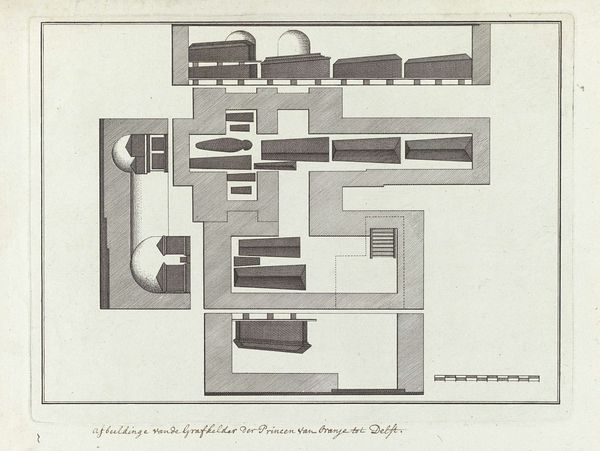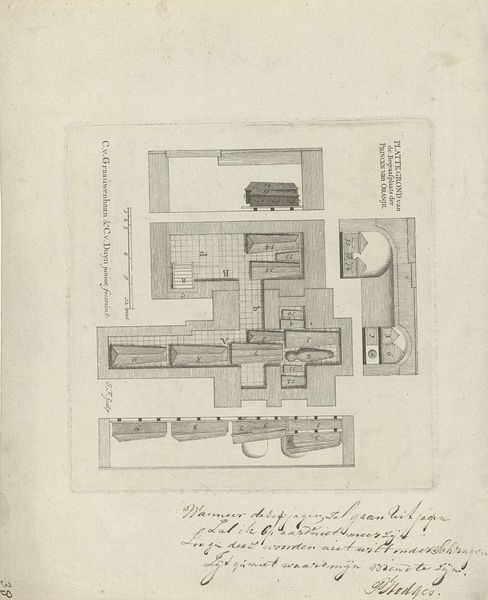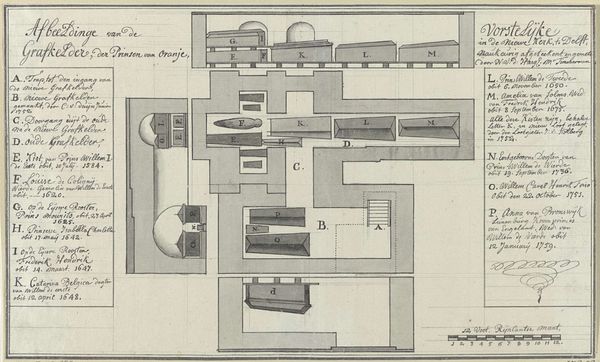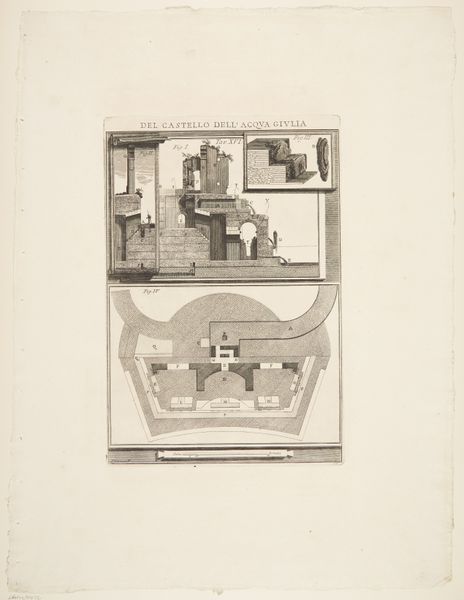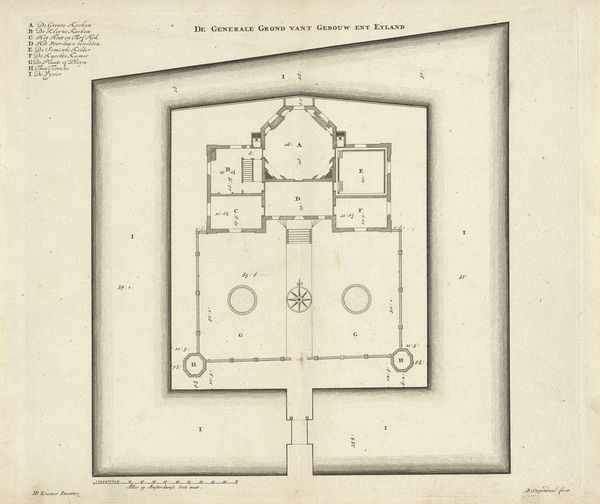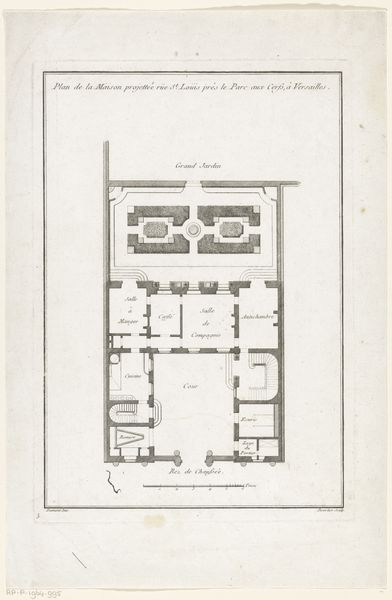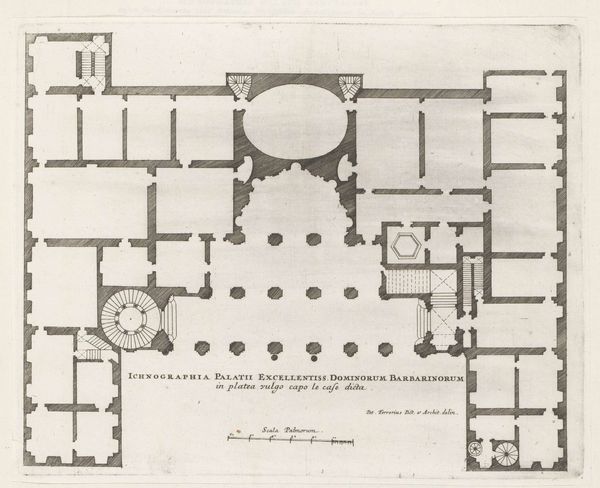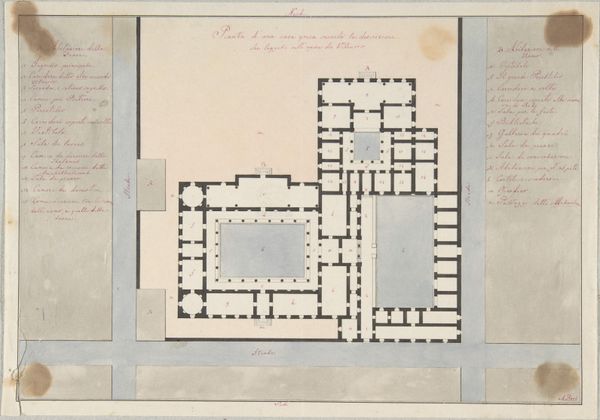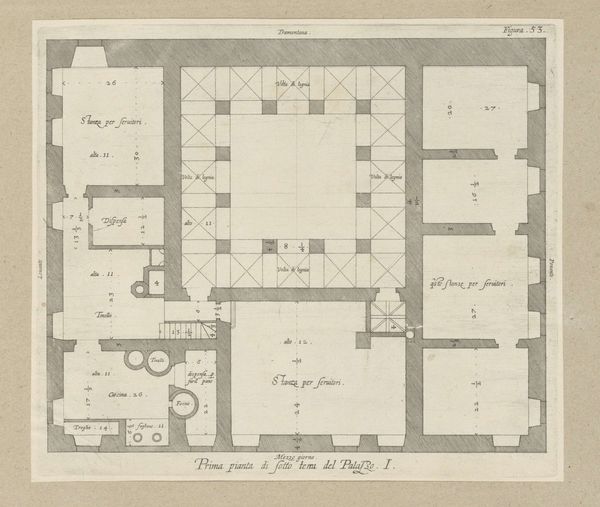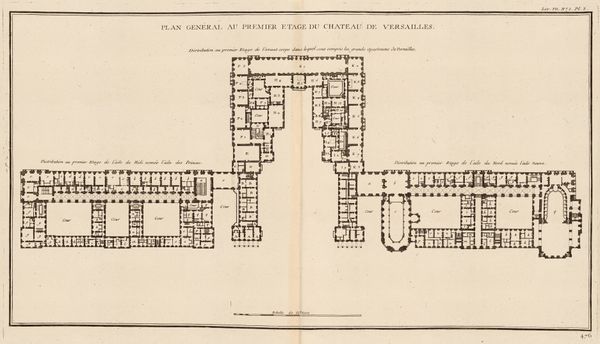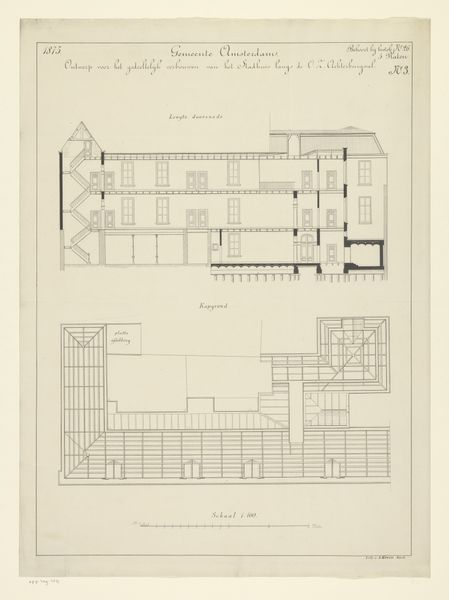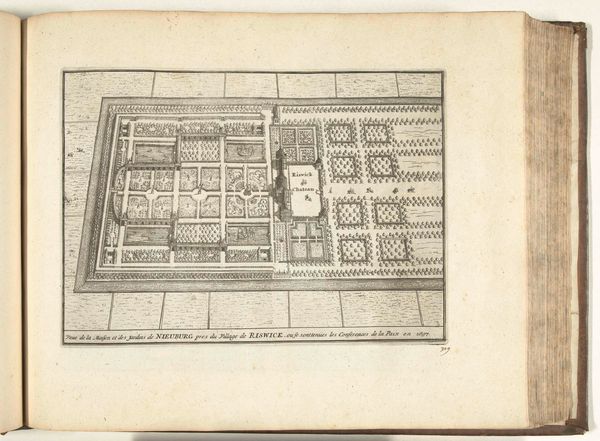
drawing, print, paper, engraving, architecture
#
drawing
# print
#
paper
#
geometric
#
history-painting
#
engraving
#
architecture
Dimensions: height 157 mm, width 159 mm
Copyright: Rijks Museum: Open Domain
This is Jacob Folkema's "Plattegrond van de grafkelder van het Huis Oranje-Nassau" or "Plan of the burial vault of the House of Orange-Nassau." While the artwork's date is unknown, Folkema created it sometime between 1692 and 1767. It serves as a stark reminder of the power dynamics inherent in representations of death and legacy. Here, the House of Orange-Nassau, a historically significant lineage in the Netherlands, is laid out with an almost clinical precision. What does it mean to map out a space dedicated to the dead? It invites us to consider the relationship between power, death, and representation. The map meticulously charts the final resting places, it also subtly reinforces the family's historical narrative and enduring influence. The vault, usually a space of somber reflection, is transformed into a territory to be charted and understood, thus bringing questions of mortality, memory, and power into our contemporary moment.
Comments
No comments
Be the first to comment and join the conversation on the ultimate creative platform.
